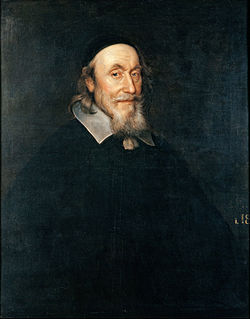The position of rikshistoriograf (Swedish, known in Latin as historiographus regni, i.e. Historiographer of the Realm or Royal Historiographer), existed in Sweden from the early 17th century until 1834.

Swedish is a North Germanic language spoken natively by 9.6 million people, predominantly in Sweden, and in parts of Finland, where it has equal legal standing with Finnish. It is largely mutually intelligible with Norwegian and to some extent with Danish, although the degree of mutual intelligibility is largely dependent on the dialect and accent of the speaker. Both Norwegian and Danish are generally easier for Swedish speakers to read than to listen to because of difference in accent and tone when speaking. Swedish is a descendant of Old Norse, the common language of the Germanic peoples living in Scandinavia during the Viking Era. It has the most speakers of the North Germanic languages.

Latin is a classical language belonging to the Italic branch of the Indo-European languages. The Latin alphabet is derived from the Etruscan and Greek alphabets, and ultimately from the Phoenician alphabet.

Sweden, officially the Kingdom of Sweden, is a Scandinavian Nordic country in Northern Europe. It borders Norway to the west and north and Finland to the east, and is connected to Denmark in the southwest by a bridge-tunnel across the Öresund, a strait at the Swedish-Danish border. At 450,295 square kilometres (173,860 sq mi), Sweden is the largest country in Northern Europe, the third-largest country in the European Union and the fifth largest country in Europe by area. Sweden has a total population of 10.2 million of which 2.4 million has a foreign background. It has a low population density of 22 inhabitants per square kilometre (57/sq mi). The highest concentration is in the southern half of the country.
The first appointment of a similar nature was that of the Dutch scholar Daniel Heinsius, appointed in 1618 by Gustavus Adolphus to be historicus regni, but it is not known if he did anything as part of this position. In the reign of Queen Christina, several individuals were appointed either just "historiographer" or "historiographer royal", with occasionally several at the same time holding the position. In 1642, Arnold Johan Messenius and Johannes Loccenius are mentioned as historiographers, a couple of years later Bogislaus Philipp von Chemnitz, and a few years later they are all called rikshistoriograf. The title was also given to Johannes Casparus Freinsheimius and Johan Henrik Boeclerus. Johannes Widekindi was appointed in 1665, later accompanied by Samuel von Pufendorf.

Daniel Heinsius was one of the most famous scholars of the Dutch Renaissance.

Gustavus Adolphus, also known in English as Gustav II Adolf or Gustav II Adolph, was the King of Sweden from 1611 to 1632 who is credited for the founding of Sweden as a great power. He led Sweden to military supremacy during the Thirty Years' War, helping to determine the political as well as the religious balance of power in Europe. He was formally and posthumously given the name Gustavus Adolphus the Great by the Riksdag of the Estates in 1634.
Arnold Johan Messenius was a Swedish enfant terrible and Rikshistoriograf who was condemned to death and executed under the reign of Christina, Queen of Sweden.
Several of the early historiographers royal were foreigners, but the statutes of 1720 for the royal chancellery prescribed that the position had to be filled by a person of Swedish nationality. The following holders of the position were Claudius Örnhiälm, Petrus Lagerlööf, Olof Hermelin, B. Högvall, Jacob Wilde, Olof von Dalin, Magnus von Celse, Anders Schönberg, Jonas Hallenberg and Friedrich Conrad Albrekt Broman, the last three partly concurrently, with Hallenberg, who held the position until his death in 1834, being the last to do so; it was formally abolished in 1835.

Olof von Dalin was a Swedish nobleman, poet, historian and courtier. He was an influential literary figure of the Swedish Enlightenment.















